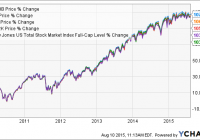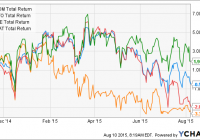What Would Larry Tisch Do?
I am a long-time admirer of Larry Tisch, as well as a disciple of his investing principles, along with those of Warren Buffett. I was fortunate enough to have been invited many times to Larry’s “power breakfasts” at the Regency Hotel, where virtually everything in the news, and also not in the news, was discussed openly and freely. The debates were fierce, and everyone left the table a little bit smarter. Larry was an asset buyer, and loved to buy at fire-sale prices and then wait for a return to normalcy, at which time, he would sell. He also loved cash flow, and especially free cash flow, which is why the Loews (NYSE: L ) empire comprised hotels, tobacco, financial, real estate and CBS for a while. He was a contrarian thinker, out of the box, with a long-term outlook to create long-term value. I remember when he bought a fleet of tankers at liquidation value and sold them when shipping recovered. Gosh, I admired Larry Tisch. I emulate in many ways his investment principles. He taught me to be patient and keep your eye on the long term. He definitely bought low and sold high, and had the liquidity to wait it out. He did not measure himself in quarters, but in years. Sounds like Buffett, doesn’t it? Larry died in 2003, and I miss him and his breakfasts. Why do I bring up Larry at this time? I have mentioned the need to both have and monitor your core investing beliefs. While I consider myself an investor with a several-year time horizon, it is so easy to get sucked into the daily gyrations in the marketplace and marking to the market each day forcing us to question our beliefs. Those days are certainly not fun, but are worthwhile and teach a valuable lesson. Never get too comfortable and complacent. I do not consider myself a contrarian as Larry was, but I am a value buyer who has consistently made singles and doubles over 35 years with only a few setbacks. How else did I compound at over 18% over 35 years, with only 4 down years. I buy value, maintain my liquidity and am an investor rather than a trader. My portfolios tend to have very low turnover. Sounds like Buffett too, doesn’t it? By the way, why would Berkshire Hathaway ( BRK.A , BRK.B ) consider buying Precision Castparts (NYSE: PCP ) today? It’s an out-of-favor industrial whose earnings are depressed, has underperformed for three years and sells at 18 times current earnings. But Buffett sees it as a great value play having a good future with strong cash flow. By the way, this would be a standalone acquisition for Berkshire, so there are no merger synergies as in most mergers today. Sounds like a Tisch play! Mine, too. So what is the point of all of this? As I mentioned last week, the market has bifurcated, with perceived growth companies doing well, while industrial companies have languished a la Precision Castparts. I will come back to this point later, but you can sense where I am going. The key event of last week was clearly the employment numbers in the United States. There was a gain of 215,000 jobs in July, the unemployment rate stood at 5.3% (down from 6.2% a year ago), average earnings of workers were up 2.3% from a year earlier, and the broader measure of unemployment, which includes discouraged workers and part-time employees, fell to 10.2%. Since the Fed’s goal is 5-5.2% unemployment, the general consensus is that the first Fed rate increase is near. As I mentioned last week, the Fed is caught between a rock and a hard place, as it MUST maintain its credibility, so a rate increase is at hand, despite weakness overseas and a strong dollar. Do you really believe that an increase in the funds rate of 25 basis points from near zero will stop out the economy? No, and if the dollar increase dramatically more as foreign capital is sucked into the United States, our exports will only suffer more depressing growth. But the financial markets think differently, as the stock market fell on fears of the negative impact of a Fed hike on growth, and the yield curve flattened as the long end rallied. Something that we predicted would possibly occur after the Fed did raise rates even by a token amount. The U.S. economy continues to chug along at a 2.5%-plus rate led by the consumer, with inflation staying beneath 1.5%. By the way, did any of you go to the pump this weekend? I paid $2.80 a gallon. Consumer sales in the eurozone were weak in June, held down by fears of a Greek default and its potential negative impact. But I believe it that the slowdown is transitory and will pick up for the remainder of the year, bolstered by a strengthening economy led by exports and higher consumer disposable income benefiting from lower energy prices. German manufacturing orders have surged, and the country’s trade surplus will hit an all-time high this year. Germany is the clear winner of a weak euro. Maybe by design! China has continued to stumble along, at least compared to its historical growth rates. While the country’s Services sector has improved, with a reading of 53.8 last month, its exports have weakened more than anticipated due to lower demand from Europe, the United States and Japan. As I mentioned last week, I expect that the Chinese government will permit the yuan to weaken in order to bolster exports, and implement additional stimulus to boost domestic demand. Don’t cry for China, as growth in 2015 will still exceed my 6.5% growth target. The country reported that its inflation rate rose to 1.6%, so Bill Gross’ fears of deflation appear to be off the mark. The stock markets weakened every day last week, led by the industrials, and finally, some of the high-fliers like biotech. The pundits are clearly anticipating that a Fed rate hike will be the beginning of the end for our economy, so it’s time to honker down now and get defensive. Tisch would disagree, and Buffett, too, would clearly disagree, as he is putting his money where his mouth is in purchasing Precision Castparts – and I would disagree as well. I mentioned last week that I was beginning to cover many of my commodity shorts, excluding in the energy patch, as I began to see aggressive cuts in capital spending and a rationing in production to bring it in line with growth. Finally, the decline in many commodity prices has fallen beneath cash costs of production, which is a precursor for bankruptcies. All good for the well-capitalized, low-cost producers. Not only did I cover my shorts, but I went long BHP and RIO, which both have strong balance sheets, good cash flow and dividends over 5.5%, which are well-supported. Like Tisch, I am willing to wait for a return to normalcy in industrial commodity prices. I cannot say the same about energy, though, for many reasons which I have discussed over the year. Politics play a large role in continued over production of oil, and that won’t change with Iran likely to come on-stream. I started adding to my industrials, including chemicals, last week as they weakened as mentioned earlier. If Buffett could buy a Precision Castparts, I could add to General Electric (NYSE: GE ), Honeywell (NYSE: HON ) and United Technologies (NYSE: UTX ). There is tremendous value out there if you are patient. Find those companies making strategic changes to enhance their future prospects that are not fully recognized. There is so much to discuss with all of you that I have decided to begin a weekly webcast in September. It will create a forum, much like Tisch’s power breakfasts, where we can discuss the global events impacting investing and brainstorm on its implications. I will say more about this and some other things that could enhance our relationship in a beneficial way soon. I have enjoyed putting myself on the firing line week in and week out. I hope that you find it helpful too. The results are in after 18 months of writing weekly blogs, and I have been told that I batted over 750 during that period, which is way above the norm even for the most successful money managers whom I have been compared to, like Leon Cooperman. My funds under management during this period were up over 50% net of fees, including up 16% year-to-date averaging less than 92% net long. Next on my agenda is to build our relationship by maximizing my strengths in the area of your needs. The weekly webcast is the start. More to come. Remember to review all the facts, step back and take a deep pause to reflect, control risk at all times and… Invest Accordingly!

